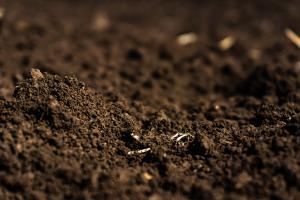Why is My Snake Plant Turning Brown?
Snake plants are beautiful, long-lasting houseplants that are relatively easy to care for. However, if you notice brown leaves or brown spots on your snake plant, it may be an indication that something is wrong. In this article, we will explore some of the reasons why your snake plant may be turning brown and what you can do to fix it.
1. Overwatering
One of the most common reasons why snake plants turn brown is due to overwatering. This can happen when you water your plant too frequently or when you let it sit in standing water. Overwatering can cause the roots of the snake plant to rot, which can lead to brown and mushy leaves. To avoid overwatering, make sure you only water your snake plant when the soil is dry to the touch. Also, be sure to use a well-draining soil mixture and a pot with drainage holes to allow any excess water to escape.
2. Underwatering
While overwatering can lead to brown leaves, underwatering can also be the cause. When a snake plant is not getting enough water, it can become dehydrated, which can cause the leaves to turn brown and crispy. To prevent underwatering, make sure you water your snake plant regularly, especially during the warmer months when the plant may need more water. Also, make sure your plant is getting adequate sunlight, as too much shade can make it difficult for the plant to absorb water.
3. Low Humidity
Another reason why snake plants may turn brown is due to low humidity levels. Snake plants prefer a moderate to high level of humidity, and if the air in your home is too dry, the leaves may turn brown and brittle. To increase the humidity around your snake plant, you can try misting the leaves regularly or placing a humidifier near the plant. You can also group your houseplants together, as this can create a microclimate with higher humidity levels.
4. Exposure to Extreme Temperatures
Snake plants are hardy plants that can tolerate a wide range of temperatures, but extreme heat or cold can cause the leaves to turn brown. If your snake plant is placed in a drafty area or near a heater or air conditioner, it may be exposed to extreme temperatures that can damage the plant. To avoid this, make sure your snake plant is placed in a location with consistent temperatures and away from any sources of extreme heat or cold.
Conclusion
In conclusion, there are several reasons why your snake plant may be turning brown, including overwatering, underwatering, low humidity, and exposure to extreme temperatures. If you notice brown leaves on your snake plant, it is important to investigate the cause and take steps to correct it to prevent further damage to the plant. By following these tips, you can keep your snake plant healthy and thriving for years to come.

 how many times do yo...
how many times do yo... how many planted tre...
how many planted tre... how many pine trees ...
how many pine trees ... how many pecan trees...
how many pecan trees... how many plants comp...
how many plants comp... how many plants can ...
how many plants can ... how many plants and ...
how many plants and ... how many pepper plan...
how many pepper plan...





























